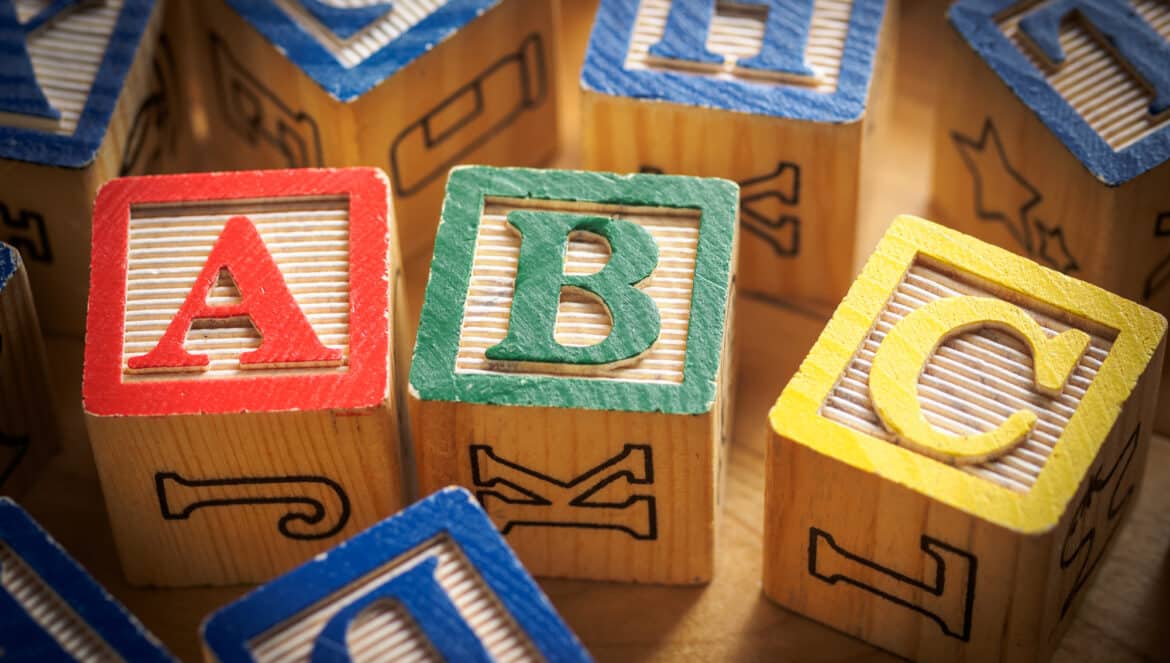An OSMO reference document hosted on edCircuit with permission from Osmo.
Written by:
Heidy Maldonado, Tangible Play, [email protected]
Ariel Zekelman, Tangible Play, [email protected]
Abstract: Inspired by Fröbel and Montessori manipulatives, we followed Design-Based Research methods in the creation of a tangible letter learning game for three- through five-year old children. In this paper we cover the iterative design and evaluation cycles, and the constraints and tradeoffs explored across implementations, as the game evolved from Alpha to Beta phases. We incorporate explicit feedback and analytics of play data from the Beta experience of two-hundred seventy-three children across two different contexts (school and
home) to discuss current design concerns, future work, and possible implications.
Introduction Children’s letter knowledge is the foundation of literacy. The alphabetic principle is the understanding that there are systematic and prescriptive relationships between written letters and spoken sounds. Given its importance as
the first step towards academic achievement and attainment, neuroscientist Dehaene (Dehaene, 2009) recommended that for young children “all teaching efforts should be initially focused on a single goal, the grasp of the alphabetic principle.” This paper chronicles the intermediate stages in the process of developing a new
tangible application for tablets designed to help children learn to recognize letters by their shape and name, to form these letters, and to associate their shape with the letter sound. The past century has seen significant research that furthered our understanding of how children learn letters alongside radical technological discoveries and advancements. Despite the fact that many learning
experiences have been adapted to the digital medium, the majority of children worldwide learn their ABCs following the same methods, and with the same materials, as children did a hundred years ago. We have digital alphabet eBooks rather than paper ones, and hundreds of apps that aim to help children in learning their letters. Yet digital adaptations of traditional teaching methods do not always offer the same learning potential across all different implementations and media.
Drawing inspiration from Fröbel, from observations of children playing with these manipulatives, and following the tenets of design-based research (DBR) methodology (Design-Based Research Collective, 2003; Wang & Hannafin, 2005), we iteratively evaluated and re/designed a letter learning game for children three through five years old. Our work aims to adapt the advantages of physical manipulatives–and specifically, those manipulatives with a proven track record of positively impacting children’s learning of the shapes and names of letters–as tangible interfaces. In this section we begin with a brief review of previous research and existing ways of teaching that inspired us. The “Implementation” section focuses on how our cross-disciplinary team evolved the initial design
through sequential iterations of evaluation and development, combining quantitative and qualitative methodologies, concluding with our current future directions. Contributions of this research are aimed at both the practical level as well as the theoretical: for the former, the lessons learned as we implement 19th century manipulatives as a tangible interface to scaffold children’s letter learning are adding to the literature towards understanding the characteristics that make tangible interfaces successful. By sharing our steps as we implement the DBR methodology across our international team, we hope to provide a template for developing educational applications that balance engagement and learning, bringing together innovative research and cutting-edge technologies. And once our tangible letter learning game is widely available, we hope to use the anonymized aggregate data to contribute to literature advancing the understanding of how children progress as they learn to recognize letters by name and shape, as they make these forms, and as they associate letters with their sounds.
Read the rest in the attached PDF
Author
-

edCircuit is a mission-based organization entirely focused on the K-20 EdTech Industry and emPowering the voices that can provide guidance and expertise in facilitating the appropriate usage of digital technology in education. Our goal is to elevate the voices of today’s innovative thought leaders and edtech experts. Subscribe to receive notifications in your inbox
